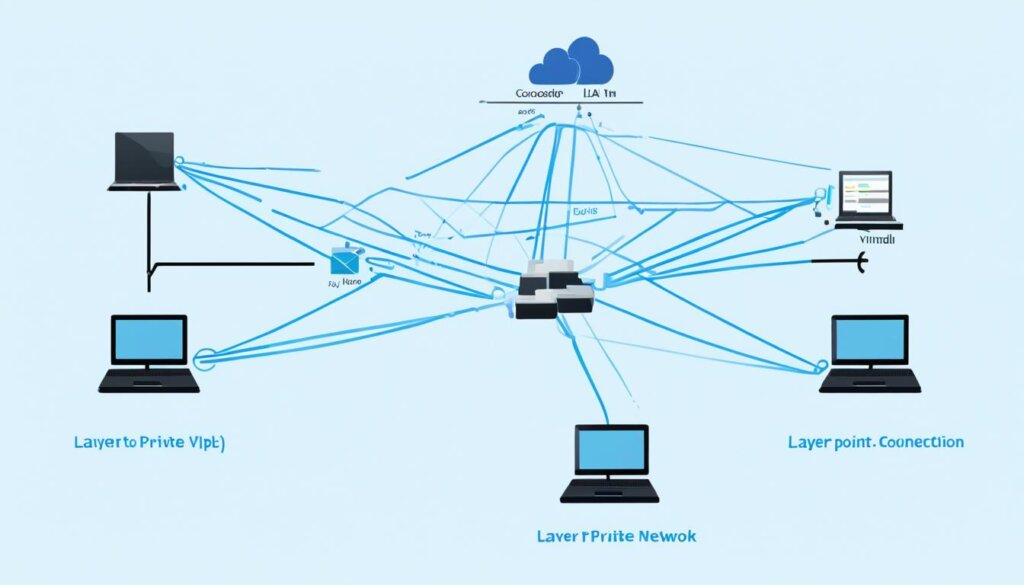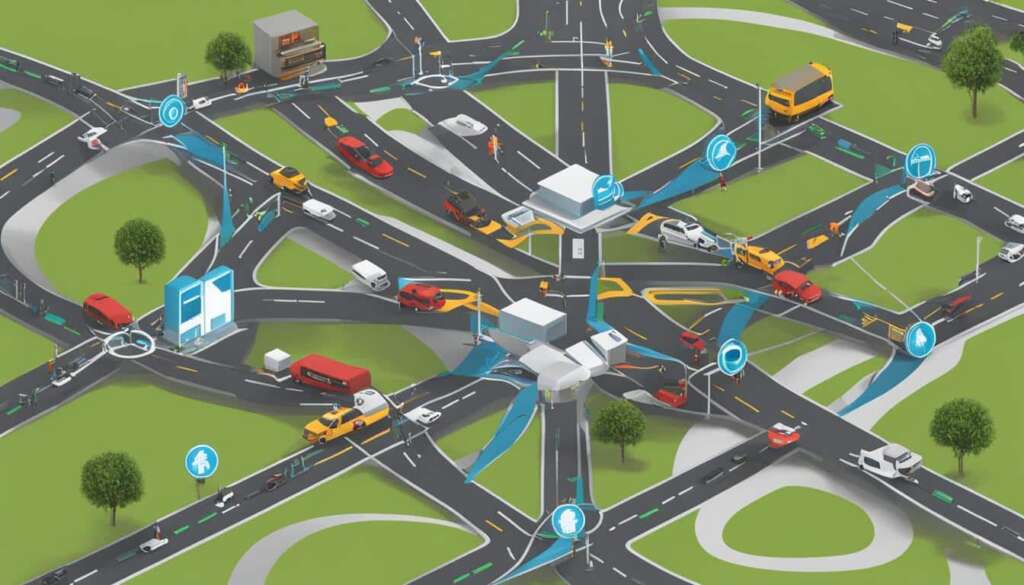Table of Contents
Welcome to our comprehensive guide to MPLS or Multiprotocol Label Switching. In this article, we will explain the meaning of MPLS, how it is used in network infrastructure, and its benefits for organizations. Whether you are new to MPLS or looking to enhance your knowledge, this article will provide you with the essential information you need.
MPLS is a networking technology that improves network performance and user experience. Unlike traditional routing that relies on network addresses, MPLS routes traffic based on labels. This label-based approach allows for faster and more efficient data transfer, reducing downtime and improving speed.
MPLS operates at Layer 2.5 of the OSI seven-layer hierarchy, sitting between the Data Link Layer and the Network Layer. It is commonly used by organizations that have multiple remote branch offices needing access to a central data center or applications.
While MPLS provides better performance and bandwidth, it is important to note that it can be costly and lacks flexibility on a global scale. As organizations increasingly adopt cloud technologies, traditional MPLS models become inefficient, leading to the exploration of alternatives like SD-WAN.
In the next sections of this article, we will delve deeper into how MPLS networks work for cloud adoption, the different types of MPLS, and the benefits it offers to organizations. Stay tuned to discover more about this protocol-independent solution that enhances network efficiency and user experience.
How MPLS Networks Work for Cloud Adoption
MPLS networks were designed to improve performance and simplify network management. However, as organizations move their applications to the cloud, traditional MPLS models face limitations. Alternative approaches like MPLS offloading, which utilizes a direct-to-internet connection for web traffic, are being explored. This approach allows organizations to offload internet traffic from the MPLS circuit, reducing the load on the network. Another option is completely replacing the MPLS circuit with a direct internet connection at branch offices. This can enhance access to cloud services but raises questions about networking setup and security.
A popular solution is internet-augmented MPLS with SD-WAN, which combines the flexibility of MPLS with affordable broadband internet links. SD-WAN allows organizations to optimize branch networking decisions based on application requirements, resulting in increased flexibility and cost savings compared to a traditional MPLS infrastructure. The debate between MPLS and SD-WAN continues, with some organizations opting for a hybrid approach to meet their specific needs.
Benefits of MPLS offloading
| Benefits | MPLS Offloading |
|---|---|
| Improved Network Performance | MPLS offloading reduces the load on the MPLS circuit, resulting in improved network performance and reduced latency for critical applications. |
| Cost Savings | By offloading internet traffic from the MPLS circuit and utilizing affordable broadband internet links, organizations can achieve cost savings compared to a traditional MPLS infrastructure. |
| Flexible Network Management | MPLS offloading allows organizations to optimize branch networking decisions based on application requirements, providing flexibility and adaptability to changing business needs. |
| Enhanced Access to Cloud Services | With MPLS offloading, organizations can enhance access to cloud services by utilizing direct internet connections, improving performance and user experience for cloud-based applications. |
| Scalability | MPLS offloading enables organizations to easily scale their network infrastructure as their business grows, accommodating increasing bandwidth demands. |
By adopting MPLS offloading, organizations can overcome the limitations of traditional MPLS models and leverage the benefits of direct-to-internet connections, SD-WAN, and cloud adoption.
Types of MPLS
MPLS technology offers various types of networking solutions to cater to different organizational needs. Two prominent types of MPLS are Layer 2 point-to-point and Layer 2 Virtual Private LAN Services (VPLS).
Layer 2 point-to-point MPLS
This type of MPLS is ideal for organizations that require high-bandwidth connections between a limited number of locations while maintaining cost-effectiveness. Layer 2 point-to-point MPLS serves as an alternative to traditional leased lines, offering simplified management and significant cost efficiency. It allows organizations to establish direct connections between two endpoints, ensuring fast and reliable data transfer.
Layer 2 Virtual Private LAN Services (VPLS)
VPLS combines MPLS technology with Ethernet to provide seamless Ethernet services across wide area networks (WANs) and local area networks (LANs). It offers simplified configuration and deployment, scalability, and low latency. VPLS is widely used in organizations that require the integration of multiple LANs into a single logical network, providing a secure and efficient solution for data transfer. With VPLS, organizations can connect their remote offices, branches, and data centers, benefiting from enhanced network performance and improved productivity.
To gain a better understanding of the types of MPLS, refer to the table below:
| Type of MPLS | Key Features |
|---|---|
| Layer 2 point-to-point MPLS |
|
| Layer 2 Virtual Private LAN Services (VPLS) |
|

These types of MPLS solutions offer distinct advantages and can support various protocols like ATM, frame relay, and DSL. Organizations can choose the type that best suits their networking requirements and enjoy enhanced connectivity, improved performance, and optimized resource utilization.
Benefits of MPLS
MPLS offers several benefits for organizations. One of the key features of MPLS is its QoS controls and reliability. These controls allow organizations to meet service-level agreements and prioritize different types of traffic, ensuring a consistent and reliable network performance.
Additionally, MPLS supports the creation of Virtual Private Networks (VPNs), virtual private LAN services, and virtual leased lines. This enables organizations to securely transfer data across networks, ensuring efficient and protected communication between different locations.
MPLS is protocol-agnostic, meaning it can work with various network protocols such as IP, Ethernet, ATM, and frame relay. This agnostic protocol support makes MPLS a versatile solution that can integrate seamlessly into existing network infrastructures.
MPLS routing utilizes labels, which reduces latency and improves overall network performance. This makes MPLS an excellent choice for applications that require low latency, ensuring smooth and efficient data transfer.
Furthermore, MPLS networks offer scalability, allowing organizations to easily adjust their bandwidth needs as their requirements change. This flexibility ensures that the network infrastructure can grow along with the organization’s demands.
In terms of security, MPLS provides comprehensive security measures when correctly configured. It offers customer isolation and privacy on a dedicated network, providing an additional layer of protection for sensitive data and communication. However, organizations should still implement additional security measures such as VPN tunnels and authentication protocols to enhance security further.
In summary, MPLS delivers enhanced performance, security, scalability, and versatility for organizations, making it a valuable solution for their network infrastructure needs.
FAQ
What is MPLS?
MPLS, or Multiprotocol Label Switching, is a networking technology that improves network performance and user experience. It works by routing traffic based on labels, rather than network addresses.
How is MPLS used in cloud adoption?
Organizations explore alternatives like MPLS offloading, which utilizes a direct-to-internet connection for web traffic, or completely replacing the MPLS circuit with a direct internet connection at branch offices. Another popular solution is internet-augmented MPLS with SD-WAN, which combines the flexibility of MPLS with affordable broadband internet links.
What are the types of MPLS?
MPLS technology can be classified into different types, such as Layer 2 point-to-point MPLS which provides high-bandwidth connections between a few locations, and Layer 2 Virtual Private LAN Services (VPLS) that combines MPLS with Ethernet, providing Ethernet services across wide area networks.
What are the benefits of MPLS?
MPLS offers benefits such as QoS controls and reliability, VPNs, agnostic protocol support, reduced latency and improved performance, scalability, and enhanced security measures when correctly configured.







